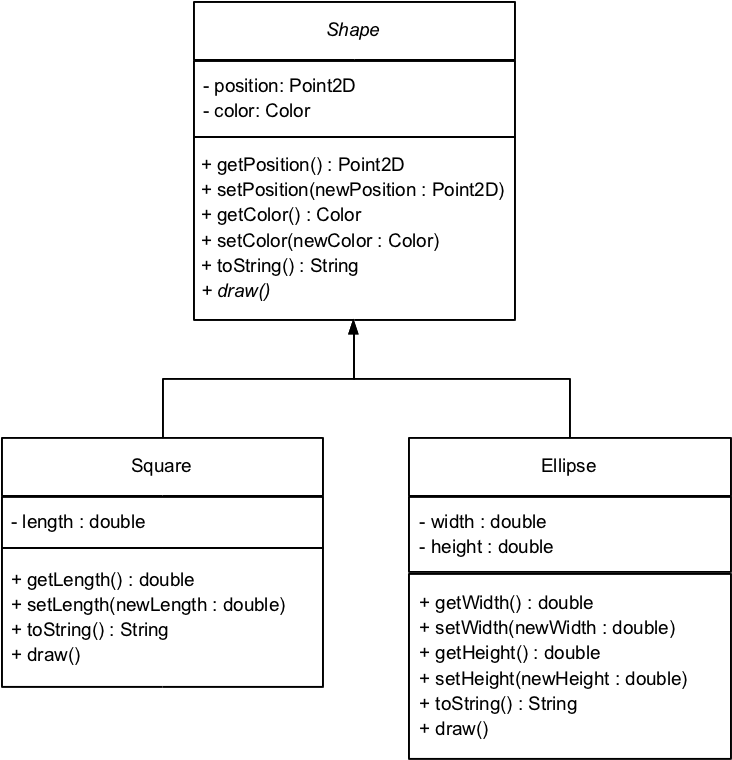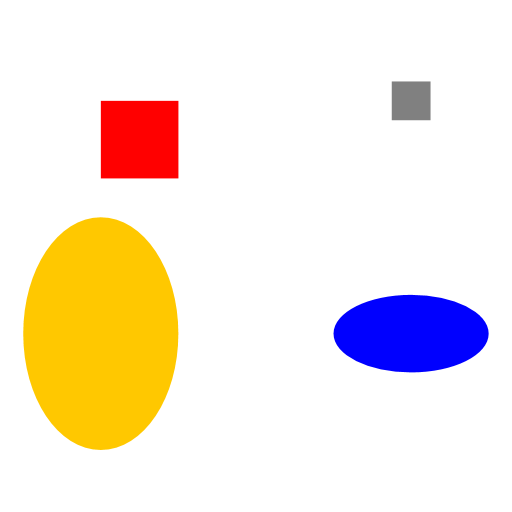CSE1030Z Lab 07
Inheritance
Thu Mar 06 2:30-4:00 PM
Introduction
This lab uses inheritance to implement a simple hierarchy of shapes that are drawn to a window. In this lab, you will:
- use an abstract parent class
- extend an abstract parent class
- use the
superkeyword to invoke a parent class constructor - use the
superkeyword to invoke a parent class method - override a parent class method, including implementing an abstract method inherited from the parent
This is intended to be a relatively short lab; you should submit your work sometime today, and preferable before the end of the lab.
The Shape Hierarchy
Implementing a hierarchy of drawable shapes is a common example of inheritance in object oriented programming. Consider the shape hierarchy shown in the UML diagram below. Each shape has:
- a position (the location of its center point)
- a color
- constructors (not shown in the UML diagram)
- methods to get and set the position
- methods to get and set the color
- a
toStringmethod that returns a string containing information about the position and color - an abstract
drawmethod that subclasses must implement; the method is abstract becauseShapedoes not contain enough information to draw actual shapes such as circles and rectangles

Subclasses of Shape are allowed to add their own new attributes and new
methods; subclasses may also override the public (and protected) methods of
Shape to customize their behavior.
We see that Square adds its own attribute that defines the length of
the sides of the square (so that we can draw smaller and larger squares). It also adds its own
methods to get and set the length. Square overrides the toString
method so that it can return string that also contains information about the length.
Square implements the draw method because it has enough
information to actually draw a square using the position, length, and color of the square.
Ellipse adds its own attributes to define the width and height of
the ellipse. It provides its own methods to get and set the width and height.
Ellipse overrides the toString method so that it
can return a string that also contains information about the width and height.
Ellipse implements the draw method because it has enough
information to actually draw a ellipse using the position, width, height, and color of the ellipse.
Question 1: Implement the Shape Hierarchy
Implement the Shape hierarchy. The APIs for the various classes can be found here:
A jar file containing Point2D is here:
-
jar file for
Point2D(not needed if you are compiling from the command line) -
jar file for
StdDraw(not needed if you are compiling from the command line)
Starter code for each class and a small tester is listed here:
- Shape.java (no changes needed)
- Square.java
- Ellipse
- TestShape2 (no changes needed)
TestShape2 should produce the following output:

submit 1030Z L7R Square.java Ellipse.java